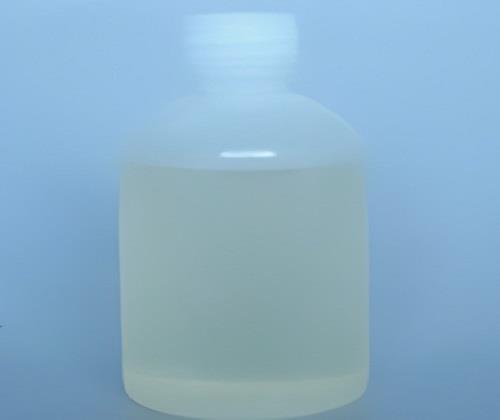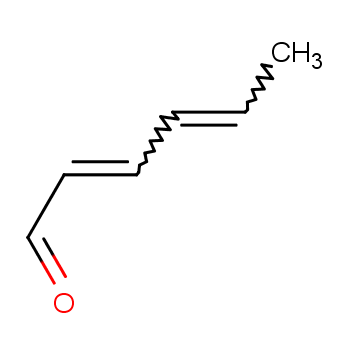 |
(E,E)-2,4-Hexadienal, also known as (E,E)-2,4-Hexadienal or trans-hexadienal, has a CAS number of 142-83-6. Its molecular formula is C6H8O, with a molecular weight of 96.13. As an organic compound, (E,E)-2,4-Hexadienal is a colorless to pale yellow liquid at room temperature, with a unique sweet green spicy floral aroma reminiscent of citrus and fresh green leaves.

(E,E)-2,4-Hexadienal properties
Physically, (E,E)-2,4-Hexadienal has a melting point of -16.5°C, a boiling point of 69°C/20 mmHg, a density of 0.895 g/mL at 20°C, and 0.871 g/mL at 25°C. These physical properties determine its existence under different temperatures and pressures, providing a basis for its industrial applications. Chemically, (E,E)-2,4-Hexadienal is a relatively stable compound but can undergo chemical reactions under certain conditions. It exhibits some reducing and oxidizing properties, reacting with strong reducing agents, bases, oxidants, and nucleophilic reagents to form other compounds.
In the food industry, (E,E)-2,4-Hexadienal is used as a food flavoring agent, primarily in raspberry, mango, eggfruit, apple, and strawberry flavorings. Its fresh aroma enhances the taste and quality of food, making it more delicious. It is considered a safe food additive as it naturally occurs in some fruits and vegetables. Additionally, in the cosmetics and fragrance industry, (E,E)-2,4-Hexadienal is widely used to manufacture perfumes, soaps, shampoos, and air fresheners, improving indoor air quality. It also has applications in the pharmaceutical field as a drug intermediate, participating in drug synthesis and preparation due to its antibacterial and anti-inflammatory properties.
[1] Dulio A, Fuganti C, Zucchi G. Biogeneration of (E,E)-2,4-hexadienal and (E)-4-hexen-1-ol from sorbic acid by Colletotrichum gloeosporoides cultures. Flavour and Fragrance Journal, 1999, 14(2):79-81.
[2] O'Connor M P, Wenger J C, Mellouki A, et al. The atmospheric photolysis of E-2-hexenal, Z-3-hexenal and E,E-2,4-hexadienal. Physical Chemistry Chemical Physics, 2006, 8.
[3] Colmenar I, Martin P, Cabanas B, et al. Analysis of reaction products formed in the gas phase reaction of E,E-2,4-hexadienal with atmospheric oxidants: Reaction mechanisms and atmospheric implications. Atmospheric Environment, 2018, 176(Mar.):188-200.
 |